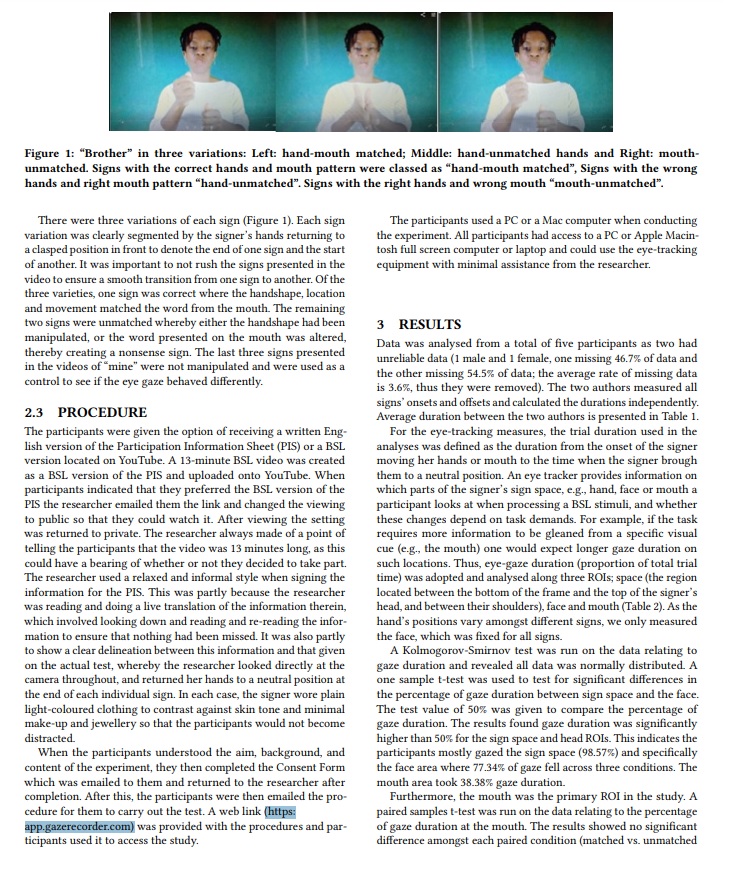
British Sign Language (BSL) User’s Gaze Patterns Between Hands and Face During Online Communication
British Sign Language (BSL) uses various visual cues from hands, mouth, and facial expressions to convey information and communicate. During the lockdown, more deaf people rely on online BSL communication. This brings a challenge for most deaf people and calls for social inclusion in the cyberworld. This study used a free online eye-tracker app and investigated how deaf people perceive BSL on the internet. A free view task was employed to explore gaze patterns when mouth and hand information was matched or unmatched. The study found 77.34% of gaze duration focused on face, while the mouth took 38.38% of the whole duration. In addition, results suggested that the mouth might play a primary role in conveying information when hand and mouth cues are incongruent.